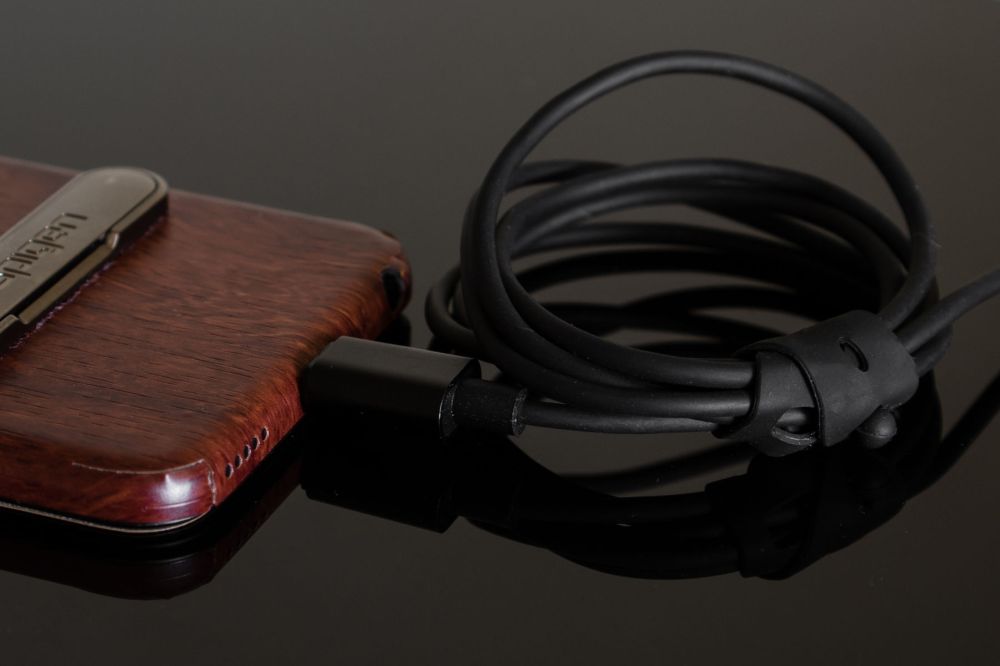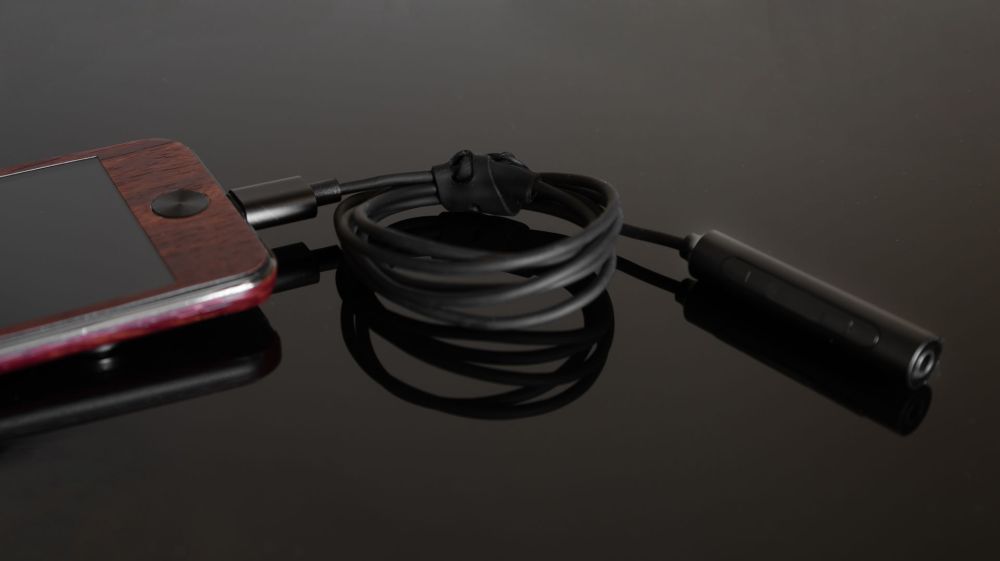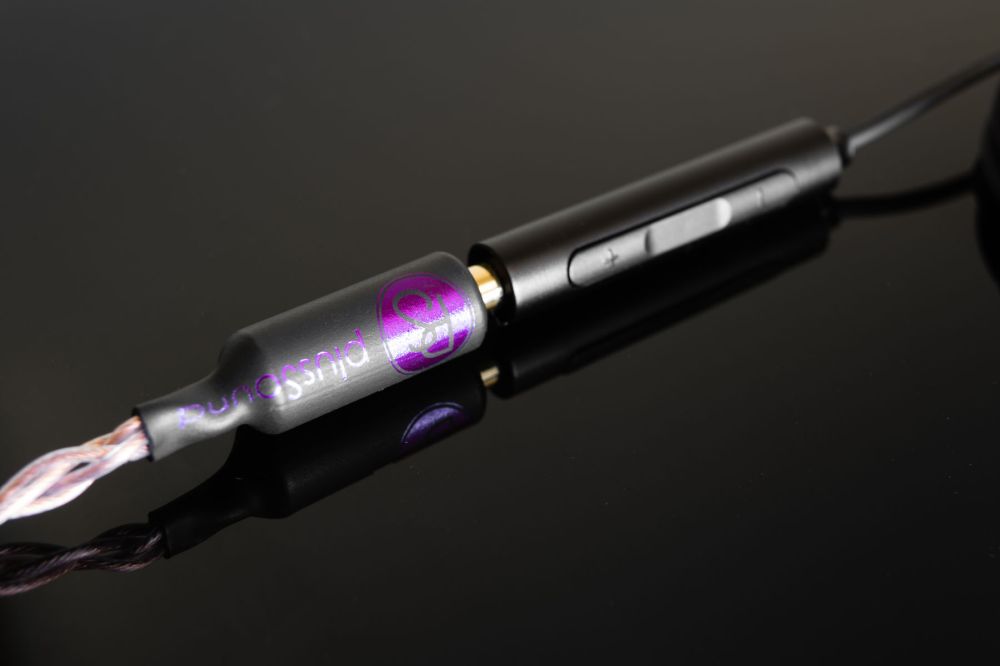General Information
Keeping your favorite 3.5mm Headphones Around
The FiiO i1 is an Apple MFi certified, digital-to-analog converter (DAC) and headphone amplifier designed for the Lightning connector. The digital audio signal enters through the Lightning connector end that can be connected to the Apple iPhone/iPod/iPad (and other Apple products), while the analog audio signals are pushed out through the 3.5mm output. The i1 also automatically detects if you are using a standard headphone or one with in-line controls. Just because Apple has ditched the headphone jack doesn’t mean you have to ditch your favorite headphones.
High-Performance DAC Chip for Better Quality than iPhone's Stock DAC
Within the i1 is a high quality chip with both a DAC and a headphone amplifier. Not only does this chip support lossless audio formats, as well as achieve a high signal-to-noise ratio and low distortion, it also supports high-definition voice calls to give you crystal-clear conversations anytime, anywhere. (The i1 currently only supports up to lossless 48kHz audio due to the Lightning Audio Module (LAM) – this may change to up to 192kHz pending changes to the LAM.)
High-quality Microphone that Clearly Captures Your Voice
Built into the i1 is a high-sensitivity microphone that ensures your voice is clearly heard during calls and recordings – no more miserable conversations due to poor voice quality.
Seamless Metal Body to Perfectly Pairs with your iPhone
In the quest for making this product as innovative as possible, we have made the i1 only 9.5mm thick. With its carefully sculpted, seamless, yet lightweight body and its matte black color, the i1 gives off a delicate yet sophisticated appearance. The i1 is built so that once you look at it or feel it, you know that it is the perfect complement to your iPhone.
Feel at Home with a Familiar Layout
Since the i1 shares the same button layout as the stock Apple headset, you can immediately start using it without any hassles. The i1 further improves on the Apple headset with larger buttons with more tactile feedback, allowing you to complete actions more easily and quickly.
Long press or short press the + and – buttons to increase/decrease the volume.
Short press the PLAY (center) button to pause/play the current song.
Long press the PLAY (center) button to call up Siri.
Double tap the PLAY (center) button to go to the previous song.
Triple tap the PLAY (center) button to go to the next song.
Control All with Your Fingers
The three-button design of the i1 allows you to effortlessly pause, play, and switch tracks, as well as answer the phone, adjust the volume, and a number of other operations. Just gently press the buttons with your fingers and you will find that you have no need to even take out your Apple product, ensuring it stays pristine and undamaged.
Simply Plug-and-Play
The i1 automatically knows when it is plugged in and when it is pulled out of your Apple device for truly seamless operation. No need to worry about any interference noise when connecting and disconnecting to your Apple product or when switching tracks – just plug it in and enjoy your music!
A Dedicated Companion App at Your Service
FiiO has a team specifically dedicated to maintaining a dedicated iOS app for the i1, for fast and convenient firmware upgrades in the future.
Quick Wake Up but no Wasted Electricity
When your Apple iOS device goes into standby, the i1 will automatically fall into a lower power consumption mode. You can also set the i1 to go into standby mode and/or sleep mode after a certain period of time to reduce the power used by the i1, and save it for your Apple device. You can even wake up your Apple device through the i1 by pressing the play/pause button – and you can wake up the i1 from your Apple device too.
Compatible with a Wide Range of Music Apps and Formats
The i1 not only supports iTunes, it is also compatible with many other music apps, including (but not limited to): Spotify, Tidal, and Apple Music.A total of 9 music formats are supported, including AAC (from 8 to 320 kbps), protected AAC files from the iTunes store, Apple Lossless (ALAC), and AIFF. You can be sure that you can listen to your favorite songs, no matter which format they are in.
Specifications
Name/Model No.: i1/Fi1123
Weight: about 11.5g
Input Interface: MFi standard lightning plug
Output Interface: 3.5mm stereo jack
Supported USB Sample Rate: Lossless 48kHz, my change to up to 192kz pending changes to the LAM.
THD+N: <0.003% (1 kHz)
Output Impedance: <1Ω (32Ω loaded)
Color: Black
Dimensions: 45.5mm in length, 9.5mm in diameter
Cable Length: 80mm
CODEC Chip: NAU88L25
Output Power: 30 mW (16Ω loaded)
Frequency Response: 20 Hz~20 kHz
Supported Device: see packaging for the details
The FiiO i1 is an Apple MFi certified, digital-to-analog converter (DAC) and headphone amplifier designed for the Lightning connector. The digital audio signal enters through the Lightning connector end that can be connected to the Apple iPhone/iPod/iPad (and other Apple products), while the analog audio signals are pushed out through the 3.5mm output. The i1 also automatically detects if you are using a standard headphone or one with in-line controls. Just because Apple has ditched the headphone jack doesn’t mean you have to ditch your favorite headphones.
High-Performance DAC Chip for Better Quality than iPhone's Stock DAC
Within the i1 is a high quality chip with both a DAC and a headphone amplifier. Not only does this chip support lossless audio formats, as well as achieve a high signal-to-noise ratio and low distortion, it also supports high-definition voice calls to give you crystal-clear conversations anytime, anywhere. (The i1 currently only supports up to lossless 48kHz audio due to the Lightning Audio Module (LAM) – this may change to up to 192kHz pending changes to the LAM.)
High-quality Microphone that Clearly Captures Your Voice
Built into the i1 is a high-sensitivity microphone that ensures your voice is clearly heard during calls and recordings – no more miserable conversations due to poor voice quality.
Seamless Metal Body to Perfectly Pairs with your iPhone
In the quest for making this product as innovative as possible, we have made the i1 only 9.5mm thick. With its carefully sculpted, seamless, yet lightweight body and its matte black color, the i1 gives off a delicate yet sophisticated appearance. The i1 is built so that once you look at it or feel it, you know that it is the perfect complement to your iPhone.
Feel at Home with a Familiar Layout
Since the i1 shares the same button layout as the stock Apple headset, you can immediately start using it without any hassles. The i1 further improves on the Apple headset with larger buttons with more tactile feedback, allowing you to complete actions more easily and quickly.
Long press or short press the + and – buttons to increase/decrease the volume.
Short press the PLAY (center) button to pause/play the current song.
Long press the PLAY (center) button to call up Siri.
Double tap the PLAY (center) button to go to the previous song.
Triple tap the PLAY (center) button to go to the next song.
Control All with Your Fingers
The three-button design of the i1 allows you to effortlessly pause, play, and switch tracks, as well as answer the phone, adjust the volume, and a number of other operations. Just gently press the buttons with your fingers and you will find that you have no need to even take out your Apple product, ensuring it stays pristine and undamaged.
Simply Plug-and-Play
The i1 automatically knows when it is plugged in and when it is pulled out of your Apple device for truly seamless operation. No need to worry about any interference noise when connecting and disconnecting to your Apple product or when switching tracks – just plug it in and enjoy your music!
A Dedicated Companion App at Your Service
FiiO has a team specifically dedicated to maintaining a dedicated iOS app for the i1, for fast and convenient firmware upgrades in the future.
Quick Wake Up but no Wasted Electricity
When your Apple iOS device goes into standby, the i1 will automatically fall into a lower power consumption mode. You can also set the i1 to go into standby mode and/or sleep mode after a certain period of time to reduce the power used by the i1, and save it for your Apple device. You can even wake up your Apple device through the i1 by pressing the play/pause button – and you can wake up the i1 from your Apple device too.
Compatible with a Wide Range of Music Apps and Formats
The i1 not only supports iTunes, it is also compatible with many other music apps, including (but not limited to): Spotify, Tidal, and Apple Music.A total of 9 music formats are supported, including AAC (from 8 to 320 kbps), protected AAC files from the iTunes store, Apple Lossless (ALAC), and AIFF. You can be sure that you can listen to your favorite songs, no matter which format they are in.
Specifications
Name/Model No.: i1/Fi1123
Weight: about 11.5g
Input Interface: MFi standard lightning plug
Output Interface: 3.5mm stereo jack
Supported USB Sample Rate: Lossless 48kHz, my change to up to 192kz pending changes to the LAM.
THD+N: <0.003% (1 kHz)
Output Impedance: <1Ω (32Ω loaded)
Color: Black
Dimensions: 45.5mm in length, 9.5mm in diameter
Cable Length: 80mm
CODEC Chip: NAU88L25
Output Power: 30 mW (16Ω loaded)
Frequency Response: 20 Hz~20 kHz
Supported Device: see packaging for the details



























